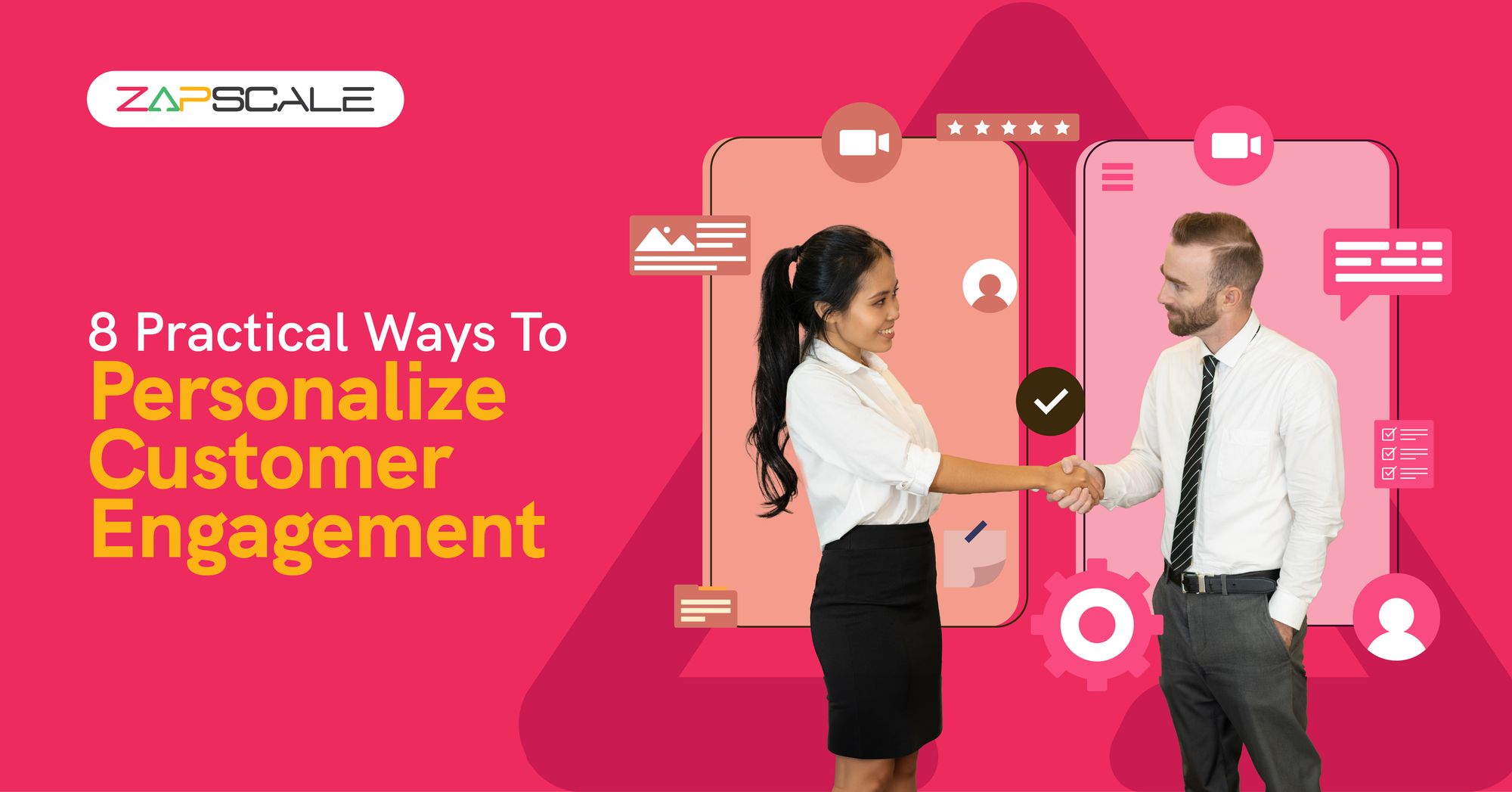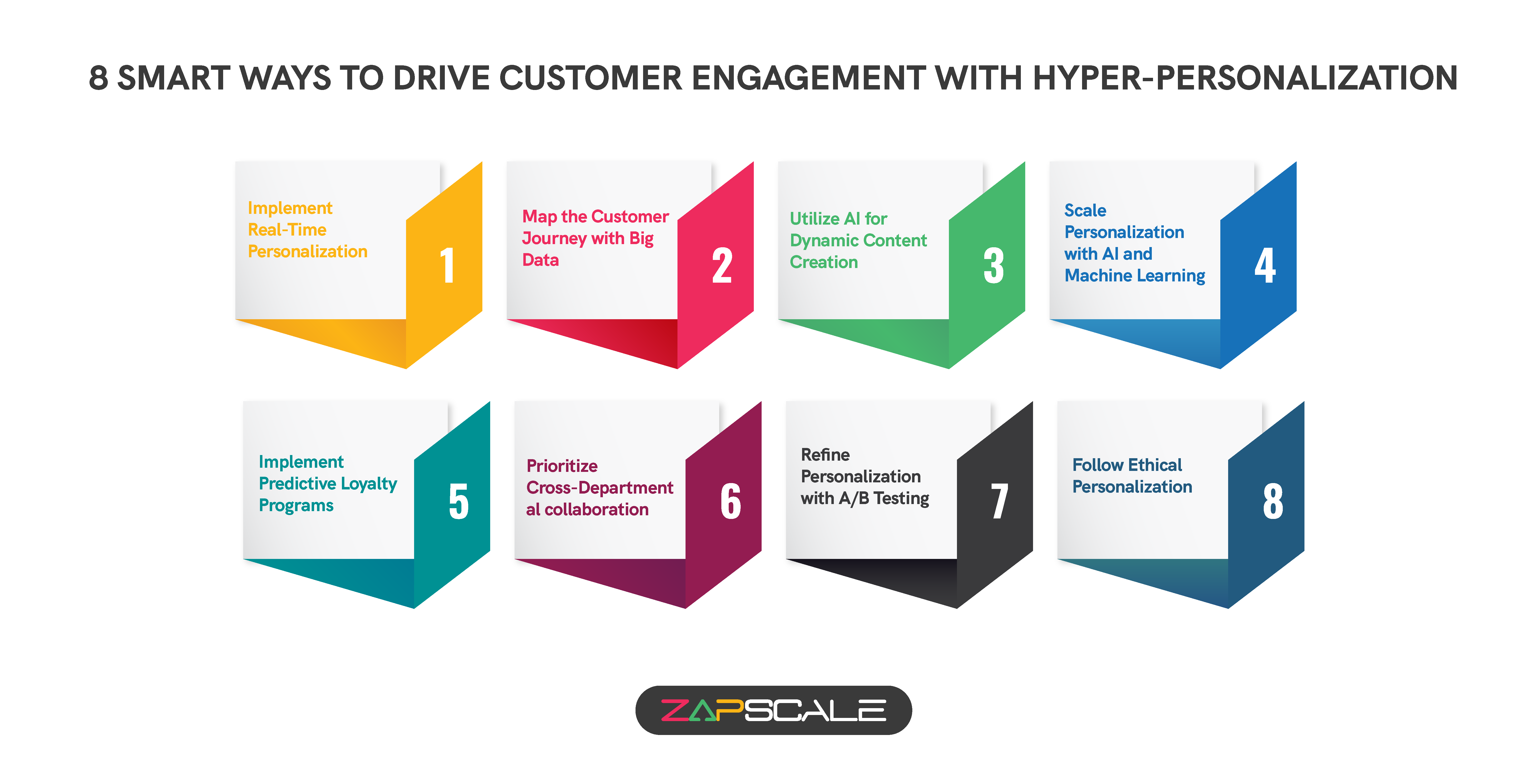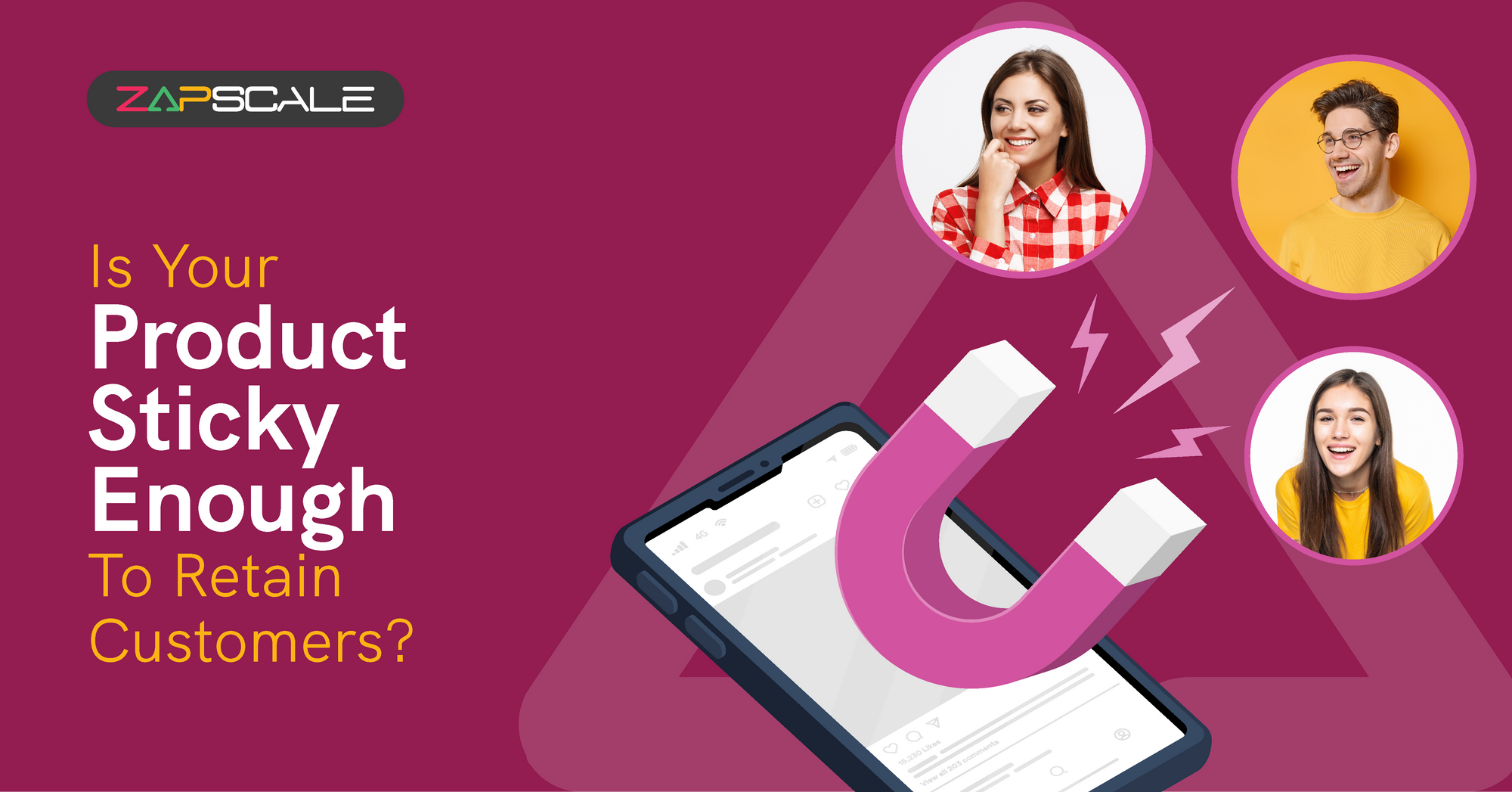CATEGORY > Customer Engagement
9 Ways Hyper-Personalization Transforms Customer Engagement for SaaS Success

Introduction
In the world of customer success and engagement, incorporating certain hyper-personalization tools and trends can turn everyday interactions into unforgettable experiences.
So, what role does hyper-personalization play in boosting customer engagement and success, and how can SaaS brands make the most of it? Find out below.
What Is Hyper-Personalization?
Hyper-personalization is a marketing technique that uses data to generate bespoke experiences for each customer. Unlike standard personalization, which targets broad customer demographics, hyper-personalization employs artificial intelligence to provide specialized and relevant content, products, or services based on individual customer preferences and behaviors. Businesses may create accurate customer profiles and provide real-time, personalized experiences by analyzing purchase history, browsing trends, and customer feedback.
This method improves customer participation and satisfaction, as well as improved conversion rates.
According to McKinsey & Company, firms that use hyper-personalization can increase sales by 10% or more, with up to 80% of customers preferring to purchase from companies that provide unique experiences.
Hyper-personalization has become more than necessary to survive and succeed in this cut-throat modern business landscape.
The Power Of Hyper-Personalization
When done right, hyper-personalization can augment customer engagement to a greater level. Let’s discover the cruciality of hyper-personalization in boosting customer success and engagement.

1. Deeper Customer Insights
Hyper-personalization analyzes data such as earlier purchases, browsing habits, and social interactions to help marketers obtain a better knowledge of customer preferences. This provides individualized recommendations that resonate with customers, giving the impression that the company understands them. The end consequence is stronger emotional ties and increased customer loyalty.
2. Upgraded Customer Experience
Personalized experiences, such as product recommendations based on individual tastes, improve the enjoyment and relevance of purchasing. Customers are more satisfied and loyal when they believe their preferences are honored. This level of customization encourages repeat purchases and builds brand loyalty.
3. Faster & Convinient Shopping
Hyper-personalization reduces friction during the shopping process. Personalized suggestions assist customers in rapidly discovering what they require, thus, saving time and making the shopping experience more seamless. This efficiency not only enhances convenience but also increases the possibility of future purchases.
4. Seamless Engagement Across Devices
Omnichannel marketing provides a consistent and tailored experience across all platforms, be it online, in-store, or on mobile. Customers receive the same level of specialized care wherever they interact with the brand, resulting in a uniform and engaging brand experience.
5. Greater Conversion Rates
Personalized recommendations boost conversion rates.
Customers are more likely to make a purchase when they see offers that are relevant to their interests, such as fitness products for someone who frequently buys gym-related stuff. Further, personalized experiences raise customer confidence in purchasing decisions, resulting in increased sales.
6. Enhanced Customer Satisfaction
Customer happiness increases as the experience becomes more meaningful. Hyper-personalization reduces annoyance by removing irrelevant content and products, resulting in a smoother buying experience. This leads to positive feedback and an increased likelihood of brand recommendations.
7. Improved Customer Retention
Personalized interactions increase customer retention by keeping them interested and loyal. By continually providing relevant information, brands can minimize churn while increasing lifetime value. Customers' loyalty to the company strengthens with time as they get used to personalized care.
8. Sense Of Exclusivity
People are likelier to stick with a company that makes them feel special. Exclusive rewards, such as personalized discounts or invitations to special sales, foster a feeling of exclusivity. This unique approach makes customers feel appreciated and promotes long-term commitment.
9. Data-Driven Insights For Continuous Excellence
Analyzing customer interactions allows brands to fine-tune their personalization strategies. Understanding what resonates with customers, brands can easily modify and evolve their approach, keeping their involvement lively and effective. This helps to establish strong customer ties while also keeping the brand competitive.
8 Smart Ways To Use Hyper-Personalization
Here are 8 hyper-personalization strategies that brands can leverage to drive optimal customer engagement.

1. Implement Real-Time Personalization
The modern buyer is looking for immediate gratification.
Real-time personalization means that when a customer interacts with your site, the content, layout, and offers are dynamically updated to meet their preferences. Artificial intelligence systems evaluate real-time activity and instantly alter content, enhancing engagement and decreasing bounce rates. This creates an engaged experience in which buyers believe the company is responding to their immediate demands.
2. Map The Customer Journey With Big Data
Hyper-personalization begins with a grasp of the complete customer journey. Big data allows marketers to chart every step, from first discovery to recurrent purchases. This enables tailored experiences at each touchpoint, making customers feel connected and cherished. By leveraging insights into previous purchases, preferences, and habits, brands can create targeted encounters that inspire long-term loyalty and boost conversions.
3. Utilize AI For Dynamic Content Creation
AI tools are critical for producing dynamic and highly tailored content in real time. Artificial Intelligence can forecast the types of products or content a customer is likely to engage with by evaluating their browsing patterns and purchasing history. This enables personalized advertisements, pop-ups, and website content to instantly adjust to a visitor's preferences, resulting in a more seamless and engaging experience.
4. Scale Personalization With AI And Machine Learning
Personalization becomes more challenging as your customer base grows. AI and machine learning models are critical for scaling personalization initiatives. These solutions can scan massive amounts of customer data and adjust in real time, allowing firms to maintain personalized experiences even as they grow. Machine learning models can recognize upcoming trends, allowing firms to stay ahead of customer expectations.
5. Implement Predictive Loyalty Programs
Predictive analytics can dramatically boost loyalty programs. Understanding customer habits and preferences allows companies to present personalized rewards, discounts, or exclusive offers based on the individual's previous behaviors. This individualized approach boosts engagement, makes customers feel appreciated, and encourages them to keep interacting with the business.
6. Prioritize Cross-Departmental Collaboration
Successful hyper-personalization necessitates collaboration across all departments, from marketing to customer service to logistics. Everyone must comprehend customer data, personalization goals, and brand messages. This alignment guarantees that the tailored experience is seamless and consistent, whether a customer interacts with your website, receives an email, or contacts customer service.
7. Refine Personalization With A/B Testing
A/B testing is critical for maximizing hyper-personalization tactics. Brands can determine which type of tailored content performs best by testing two variations, such as different product recommendations or email designs. This data-driven strategy helps to modify strategies over time, ensuring that content resonates with the target audience and increases engagement and conversions.
8. Follow Ethical Personalization
Modern customers are aware of several data privacy concerns. Hence, businesses must preserve transparency and confidence during each interaction. Brands must explicitly describe what data is being collected and how it will be utilized. Customers feel more in control of their data when opt-in rather than opt-out alternative preference management tools become available. Complying with data standards is also critical for avoiding legal complications and maintaining customer trust.
Conclusion
To sum up, hyper-personalization is indeed a powerful tool for businesses to create long-term customer relationships and drive growth. Businesses that recognize and adapt to individual requirements can provide extraordinary experiences that create loyalty and customer satisfaction.
FAQs
Q. What does hyper-personalization mean in customer success?
In customer success, Hyper-personalization refers to personalizing products, services, and experiences to individual customer wants and preferences. It is about going beyond conventional marketing and offering highly personalized encounters.
Q. What are some good examples of hyper-personalization?
A few worthy examples of hyper-personalization include personalized product recommendations on e-commerce sites, targeted email campaigns based on customer preferences, and dynamic content on websites that adapt in real time to a user’s actions.
Q. How does personalization enhance customer engagement?
Personalization helps customers feel valued and appreciated. It improves customer satisfaction, strengthens connections, and promotes repeat business.
Q. What are some proven advantages of hyper-personalization?
A: By providing more relevant and meaningful experiences across all touchpoints, hyper-personalization boosts customer happiness, retention, and conversions, and promotes deeper emotional relationships.
ABOUT THE AUTHOR
Sonali is a social media enthusiast and creative content writer with 3+ years of experience. With a passion for storytelling, Sonali delivers content that inspires, informs, and captivate readers.
Popular from Customer Engagement
Quality Content,
Straight To Your Inbox!
Subscribe for the latest blogs, podcasts, webinars, and events!

Write a Blog
If you have experience in CS and
a flair for writing, we’d love to
feature you.
Write to us on
hello@zapscale.com



